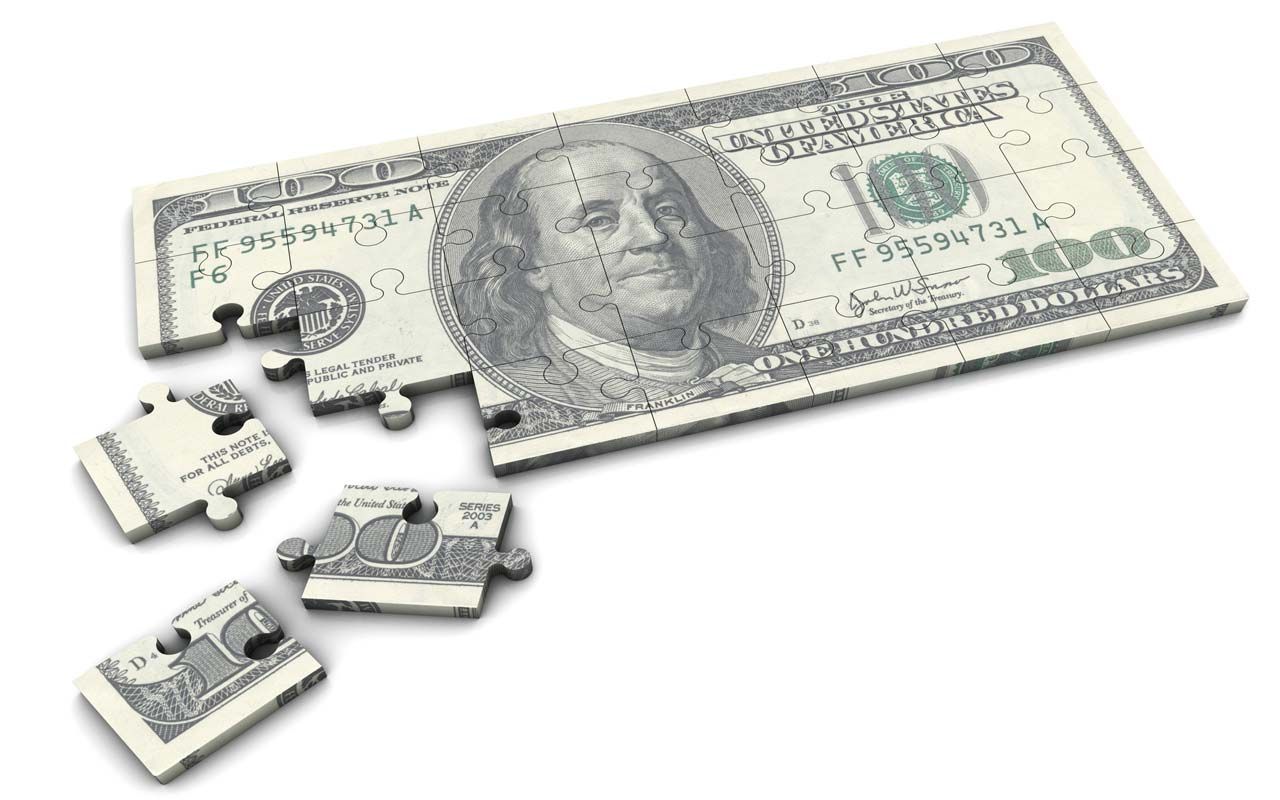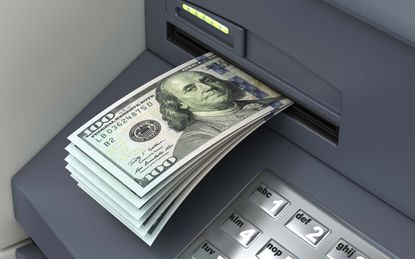13 Ways to Simplify Your Finances
We know you're stressed out.

We know you're stressed out. Our strategies can help you simplify, streamline and organize your financial life to free up both time and cash.
Take a look.

Invest in a Do-It-All Fund
Whether you’re a brand-new investor or an old pro, corralling a significant portion of your assets in the same fund can simplify your financial life and give you a clear picture of what you’ve saved and how close you are to meeting your goals.
With an asset-allocation fund, you get a stake in most major investment categories without having to shuffle the assets yourself. For example, Fidelity Four-In-One Index Fund (symbol FFNOX) holds four Fidelity index funds, with an overall mix of 85% of assets in stocks and 15% in bonds. The fund charges 0.11% of assets annually for a portfolio that includes stocks of large, midsize and small U.S. companies, shares of foreign companies in developed markets, and corporate and government bonds. Vanguard Star Fund (VGSTX) is more conservative, with 60% of the portfolio in stocks and the rest in bonds. Star invests in 11 actively managed Vanguard funds and charges 0.32%. The 15-year returns of both the Fidelity and the Vanguard funds place them in the top 25% of similar funds.
Target-date funds, like asset-allocation funds, hold a diversified portfolio of stocks and bonds, but they shift toward a more conservative asset mix as you approach retirement age. Vanguard and T. Rowe Price both offer solid, low-fee options.
Investors who are more hands-on can build a diversified portfolio on the cheap with exchange-traded funds. Just two Charles Schwab ETFs—US Broad Market ETF (SCHB) and US Aggregate Bond ETF (SCHZ)—give you a piece of some 2,000 stocks and 3,200 bonds. The funds charge expense ratios of 0.03% and 0.04%, respectively.

Put All Your Investments in One Basket
Consolidating your assets can make your investments easier to track (no more multiple statements) and reduce the paper trail at tax time. But do it carefully. If you transfer assets out of a taxable account, for example, watch out for tax consequences, transaction fees or transfer charges. You can avoid most charges by transferring assets “in kind” to the new account, but if you have to sell shares in a mutual fund your new firm doesn’t offer, you could trigger a commission or redemption fee—and a tax bill. If you roll 401(k) funds into an IRA, your company may send you a check payable to the new firm. If you fail to deposit it within 60 days, you’ll owe income tax on the money plus a 10% penalty if you’re younger than age 55.
If consolidating makes sense, choose a firm that charges low fees and has services you’ll use. Fidelity, for instance, offers more than 3,700 mutual funds without a load or transaction fee, and it sports a wide range of advisory and retirement-planning services. If your assets are difficult to move, consider aggregating them virtually, with an online investment-management tool such as Personal Capital. The site lets you link your investing accounts and analyze your whole portfolio on a single dashboard.

Use One Credit Card
Pick a single rewards card with a generous payback on everything you buy and you’ll have just one credit card bill to pay each month, a single statement to monitor for errors and fraud, and one rewards program to track. Plus, you won’t have to think about which card to pull out at the register. With the Citi Double Cash card (annual percentage rate: 13.49% to 23.49%), for example, you’ll earn 1% when you make a purchase and an additional 1% when you pay the bill, for a total of 2% back on everything you buy. Investors may prefer the Fidelity Rewards Visa (14.49%), which earns 2% cash back on purchases when you deposit the rewards into a Fidelity brokerage, retirement, checking or 529 college-savings account.
If you like playing the rewards card game—juggling multiple cards for maximum earnings in different categories—you can simplify by using credit cards from a single issuer. If you stick with cards in the Chase Ultimate Rewards program, for example, you can pool the points you earn and exchange them for travel bookings, cash back, Amazon.com purchases and other rewards. The Chase Freedom Unlimited card (0% for 15 months, then 15.49% to 24.24%) rebates a flat 1.5% on all purchases. Chase Freedom (0% for 15 months, then 15.49% to 24.24%) offers 5% back on up to $1,500 spent each quarter in rotating categories and 1% on everything else you buy (so far in 2017, categories that earned 5% included gas stations and grocery stores). And Chase Sapphire Preferred (16.49% to 23.49%; $95 annual fee, waived the first year) offers two points per dollar on travel and dining and one point on all other purchases.

Put Your Bank Accounts Under One Roof
Bank accounts are easier to manage if you keep them in one institution. Transfers from one account to another are usually quick, and you may qualify for other perks, such as waived monthly maintenance or ATM fees and higher interest rates on checking or savings. With Bank of America’s Preferred Rewards program, for example, customers who maintain a combined $20,000 or more in eligible checking, savings and Merrill Edge and Merrill Lynch investment accounts get fee breaks on mortgage originations, overdraft transfers and other services, plus other benefits. Or you could choose an internet bank that offers a great all-around suite of accounts, no matter what your balance. Ally Bank, Capital One 360 and Discover Bank, for instance, have free checking, savings and certificate of deposit accounts with competitive yields and rewards.
Or treat a high-yield checking account as a savings account, suggests Ken Tumin, of DepositAccounts.com. The Consumers Credit Union (Illinois) Free Rewards Checking account, for instance, pays 4.59% on balances up to $20,000 if you make 12 debit card purchases monthly and spend $1,000 or more a month on one of the credit union’s credit cards and meet other requirements.

Streamline Your Tech
For a smoother transition from one tech device to another, choose sides in the Apple versus Android competition. With products from the same family, you can usually access apps, movies, books and even documents from multiple devices. For example, with Apple devices you can share information, websites and photos or continue iMessage conversations on your iPhone, iPad or Apple Watch.

Leave Your Wallet at Home (and Go Mobile)
A cluttered wallet is a pain to pick through. Plus, if you lose it, you’ll have to scramble to replace its contents and protect your identity. By carrying your debit and credit card information in a mobile wallet, you can pay for purchases with your smartphone and remotely erase sensitive data if the device lands in the wrong hands. Apple Pay, Android Pay and Samsung Pay are compatible with cards from most major banks and issuers. You can pay with the Samsung wallet (using the Samsung Galaxy S6 and S7, among other models) almost anywhere that accepts credit cards. But the Apple and Android wallets are limited to merchants equipped with near field communication (NFC) terminals and those that accept payments from the wallets through their apps, such as Starbucks and ride-share services Uber and Lyft. Some mobile wallets store loyalty card and gift card information, too. Or use an app: Key Ring stores loyalty cards, and Gyft holds gift cards.
If you want to close card accounts, shutting down the ones with the lowest limits may be the best move. That’s because to maintain a strong credit score, you should use no more than 30% of the credit available to you (less is even better). Or simply let the cards collect dust in a safe place.

Pare Down Your Paper
To reclaim your desk from clutter, start by limiting the amount of paper that makes it into your home in the first place. Sign up for paperless delivery of banking, investment, loan and credit card statements, as well as internet, wireless phone, utility and other bills. Slim down your paper files by discarding older items. Utility bills and credit card and loan statements are generally available online for a year or more, and bank and investing statements are often available for several years. But don’t toss your tax returns; you’d best hang on to those forever (see When to Toss Tax Records). Use a cross-cutting shredder to destroy anything with personal information, such as account numbers or your Social Security number.
Consider digitizing documents you need to keep. Save PDFs of scanned images on your computer, then back up all of your files with an external hard drive. Consider using a scanner or a phone app, such as Smart Receipts, to take pictures of receipts for medical expenses or tax-deductible donations or large purchases that are under warranty.

Pay Someone Else to Do the Heavy Lifting
A professional can tackle tasks with a level of speed and expertise that you may not possess.
- Accountant. A certified public accountant (CPA) can guide you through complex tax-planning issues and prepare your tax return. The average fee to prepare and submit a Form 1040 with itemized deductions and a state return is about $275, according to a National Society of Accountants survey. Search for a CPA who is a personal financial specialist at www.aicpa.org.
- Financial planner. A financial adviser takes a broad look at your cash flow, savings goals, investments and other areas of your financial life. You may be charged hourly, annually, by the project or as a percentage of managed assets. Search for fee-only planners at www.napfa.org.
- Health insurance claims specialist. If you are dealing with significant medical bills, a claims specialist can help you navigate the insurance system, find errors in bills and contest denials of insurance claims. Specialists often charge about $75 to $95 an hour; you can find one at www.claims.org.
- Professional organizer. An organizer can “help clients learn the skills and develop the systems they need to get and stay organized,” says Jennifer Pastore Monroy, executive director of the National Association of Professional Organizers. An organizer may charge about $50 to $75 an hour. Search for one at www.napo.net.
- Travel agent. If you’re planning a customized trip—say, a culinary tour in Europe—an agent can create an itinerary and may also alert you to hidden or unexpected expenses and hook you up with extra perks at the hotel or on tours. Some agents charge no fee to customers; if you do pay, the price may be from $25 to $100. Search for an agent at www.travelsense.org.
- Landscape professional. Hire one to do a onetime project—say, selecting low-maintenance plants—or for ongoing lawn care. Prices vary depending on the project. Search for professionals at www.loveyourlandscape.org.

Line Up Your Health Documents
To simplify life for you and your loved ones in the event of a health emergency, make sure you have a durable power of attorney and a power of attorney for health care (sometimes called a health care proxy) that name the person who should make financial and medical decisions on your behalf if you are unable to do so. You should also have a living will (or advance health care directive) outlining your wishes for treatments and interventions.
You can order a form for a durable power of attorney from a site such as LegalZoom for about $35, and you can find free state-specific living wills at www.caringinfo.org. Or an estate-planning attorney can help you draw up documents. Note that some banks and brokerages also have specific requirements for financial powers of attorney.

Clean Up Your Digital Trail
You’ve probably accumulated a lengthy list of online accounts for everything from e-mail and social media sites to travel sites and blogging platforms. Even if you stopped using the accounts ages ago, your digital footprints—including any personal information you provided to the company—are still sitting there, a potential treasure trove of information for identity thieves.
Sign in to accounts you no longer use (check your e-mail for old messages to jog your memory), then look for information about how to delete them. The websites may not make it easy, but AccountKiller.com and Backgroundchecks.org/justdeleteme collect links and instructions on how to remove accounts from popular sites, including AOL, Hotmail, MySpace and YouTube. In some cases, you’ll be able to simply log on to your account and follow the instructions to delete it. In others, you’ll need to send an e-mail to the site’s support or customer-service team. Once you hear back, or after a few days have passed, try logging on again and send a follow-up e-mail if necessary.
Continue tidying up your digital trail by curbing the number of ads and promotional messages that land in your in-box. Many of the e-mails include an option to unsubscribe or manage your subscription at the bottom of the message, but for a quicker fix, try Unroll.me. After you give the site permission to access your e-mail account, you can choose which subscription e-mails you no longer want to receive and combine those you do want into a daily e-mail.

Simplify Budgeting
For a budget that won’t bog you down, forget about creating categories and keeping track of limits on each one. Cristina Guglielmetti, a certified financial planner in New York City, has an easier way: Add up all your fixed expenses—rent or mortgage payments, utilities, debt payments, and savings for your emergency fund, retirement accounts and future goals—and subtract that from your monthly income. The result is your budget for variable monthly expenses, including food, entertainment and other bills you could find a way to cut if you had to, such as your cell-phone plan. Use a single rewards credit card for the variable charges so that your transactions are recorded in one place. That way you can easily track spending, set up alerts when you’re nearing your cap and earn some cash back in the process.
As you age and income changes, your fixed versus variable expenses will change. “This method becomes more important in your forties and fifties, when you still have time to make adjustments before retirement,” says Guglielmetti.

Set and Forget Retirement Withdrawals
Several advisory services help you put your retirement withdrawal strategies on autopilot. For all except one, you need to have assets under management by the firm.
Robo adviser Betterment gives account holders access to its retirement income tool, which calculates a dynamic “monthly safe withdrawal” from your Betterment accounts based on your age, portfolio value and risk tolerance. Betterment also shows your required minimum distributions annually, so you can incorporate them into the withdrawals. There’s no account minimum. Fees range from 0.25% of the average asset balance per year (with no minimum) to 0.5% if you have at least $250,000 in assets. The higher-priced plan includes unlimited calls with Betterment’s financial experts.
Income Strategy offers software that helps you coordinate withdrawals (including RMDs) from all of your accounts, maximizes tax efficiency and designs a Social Security strategy that maximizes benefits. The software costs $500 for one-year’s access (the price includes up to two hours of advice from a financial professional). For more hand-holding, you can also use its advisory service. You’ll pay 1% for up to $1 million in assets, 0.75% for $1 million to $3 million, and 0.5% for more than $3 million.
Designed for the needs of near-retirees and retirees, robo adviser TrueLink sets up your investments and withdrawal strategy to match specific goals: “If your goal is income, we design it so you get a monthly check you can depend on,” with occasional adjustments for major expenses, such as a car purchase, says Kai Stinchcombe, cofounder and CEO. The plan factors in Social Security and other income, as well as RMDs. Underlying investments include ETFs and bond ladders. Cost: 0.87% of assets per year.
Vanguard Personal Advisor Services uses human advisers to help you come up with an investment-and-withdrawal strategy (based on your Vanguard portfolio) and to provide ongoing advice. The strategy considers Social Security and other income and factors in tax-efficiency and RMDs. The cost is 0.3% of Vanguard assets up to the first $5 million, with a $50,000 asset minimum.
TAKE OUR QUIZ: Are You Saving Enough for Retirement?

Save Time With These Apps and Tools
- Pay bills online. You can pay all your bills using most banks’ bill-payment feature. Or you can use Mint.com to set up auto pay for multiple bills (free if you’re paying with a bank account) as well as receive billing reminders and track spending.
- Rebalance investments automatically. Many firms offer automatic-rebalancing tools to help keep your portfolio’s mix of stocks, bonds and other investments from drifting off course. You can generally set up this feature by logging in to your account and selecting the auto-rebalance option.
- Track loyalty programs. AwardWallet keeps track of your points, miles and other rewards in nearly 700 loyalty programs, from airlines and hotels to credit cards and popular stores. The free service will notify you when your point balance changes and before your points expire.
- Manage passwords. End the vicious cycle of resetting forgotten passwords while keeping your accounts secure by using a service such as Dashlane. The service stores and encrypts your passwords and fills them in automatically when you’re browsing the web. The free version works for a single device, but for $40 a year you can sync your account information across multiple devices.
- Monitor credit. The free tool at CreditKarma.com will track your TransUnion and Equifax reports and alert you to changes, such as when a new account is opened or when your balance changes.
- Track deductible expenses. To make next year’s tax return less of a headache, start keeping tabs on deductible expenses and donations throughout the year using a program such as It’s Deductible, available through TurboTax. If you’re using a budgeting site such as Mint.com, flag expenses that may be tax-deductible as you review them so you can simply search for them at tax time.
Get Kiplinger Today newsletter — free
Profit and prosper with the best of Kiplinger's advice on investing, taxes, retirement, personal finance and much more. Delivered daily. Enter your email in the box and click Sign Me Up.
-
 Living Beyond Age 100: A Possibility With Financial Impact
Living Beyond Age 100: A Possibility With Financial ImpactLiving longer raises important financial and lifestyle questions.
By Dennis McNamara Published
-
 What's Going On With the SALT Deduction?
What's Going On With the SALT Deduction?The Tax Letter The state and local tax (SALT) deduction is a key sticking point in President Trump's tax plan.
By Joy Taylor Published
-
 15 Reasons You'll Regret an RV in Retirement
15 Reasons You'll Regret an RV in RetirementMaking Your Money Last Here's why you might regret an RV in retirement. RV-savvy retirees talk about the downsides of spending retirement in a motorhome, travel trailer, fifth wheel or other recreational vehicle.
By Bob Niedt Published
-
 The Best Places to Retire in New England
The Best Places to Retire in New Englandplaces to live Thinking about a move to New England for retirement? Here are the best places to land for quality of life, affordability and other criteria.
By Stacy Rapacon Last updated
-
 What Does Medicare Not Cover? Eight Things You Should Know
What Does Medicare Not Cover? Eight Things You Should KnowHealthy Living on a Budget Medicare Part A and Part B leave gaps in your healthcare coverage. But Medicare Advantage has problems, too.
By Donna LeValley Last updated
-
 Seven of the Best Budgeting Apps
Seven of the Best Budgeting AppsThe best budgeting apps allow you to declutter your finances, set savings goals and make sure you're on the same financial page as your spouse.
By Ella Vincent Last updated
-
 Smart Ways to Invest Your Money This Year
Smart Ways to Invest Your Money This YearFollowing a red-hot run for the equities market, folks are looking for smart ways to invest this year. Stocks, bonds and CDs all have something to offer in 2024.
By Jeff Reeves Published
-
 The 10 Cheapest Countries to Visit
The 10 Cheapest Countries to VisitWe find the 10 cheapest countries to visit around the world. Forget inflation woes, and set your sights on your next vacation.
By Quincy Williamson Last updated
-
 15 Ways to Prepare Your Home for Winter
15 Ways to Prepare Your Home for Winterhome There are many ways to prepare your home for winter, which will help keep you safe and warm and save on housing and utility costs.
By Donna LeValley Last updated
-
 Six Steps to Get Lower Car Insurance Rates
Six Steps to Get Lower Car Insurance Ratesinsurance Shopping around for auto insurance may not be your idea of fun, but comparing prices for a new policy every few years — or even more often — can pay off big.
By Donna LeValley Published
